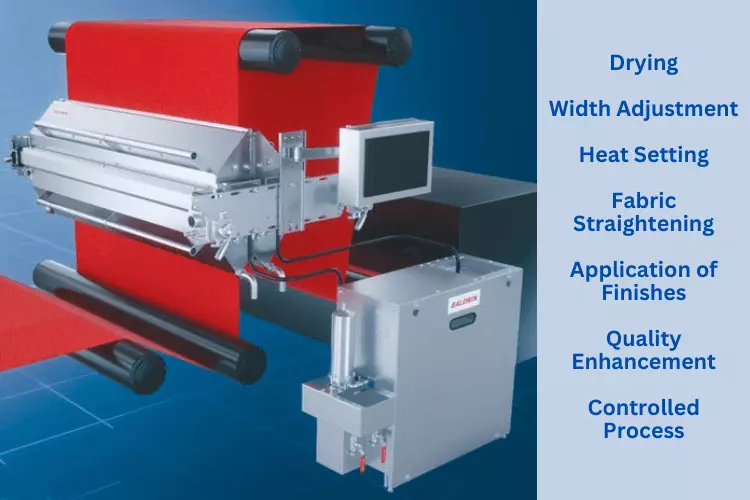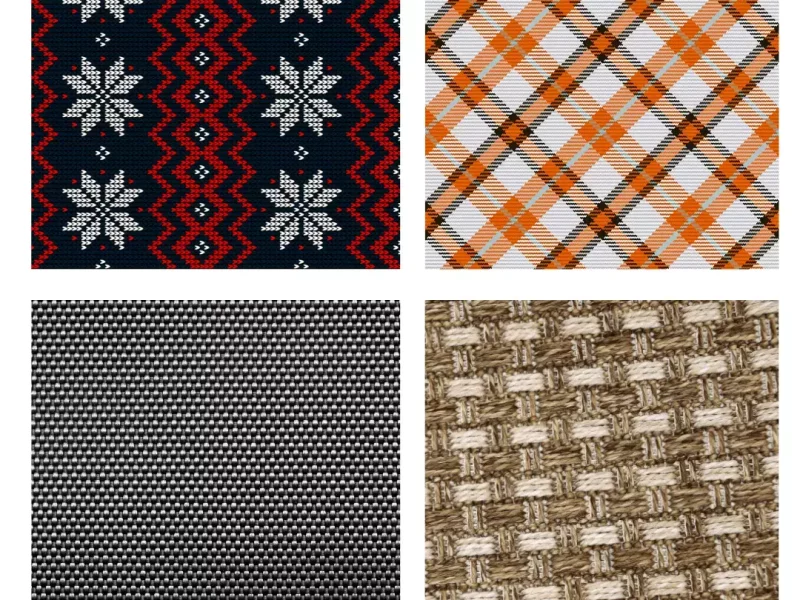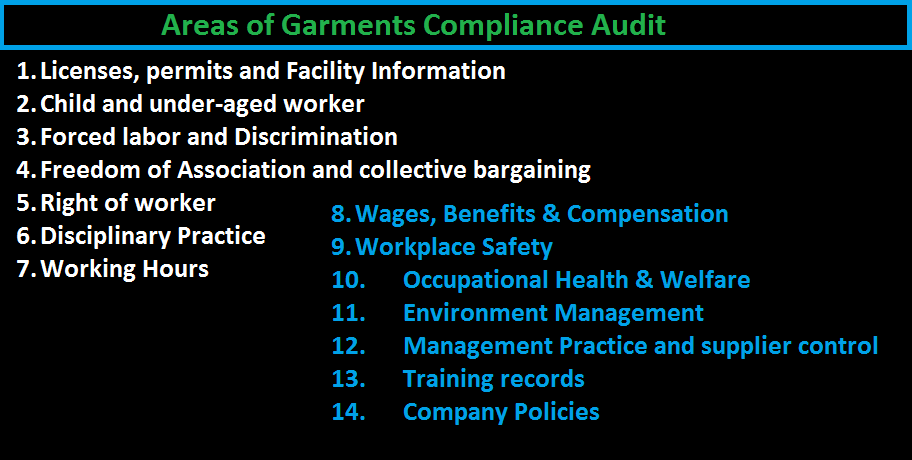A stenter machine is a piece of equipment used in the textile industry for processes like finishing, drying, and heat setting of fabrics. It’s designed to help improve the quality and appearance of fabrics by stretching and setting them in the desired dimensions while applying heat. Stenter machines are commonly used for fabrics like cotton, wool, polyester, and their blends.
Stenter Machine Functions
There are several function of stenter machine. Here are some key functions of a stenter machine:
Drying
After dyeing or printing, fabrics often retain excess moisture that needs to be removed for further processing. Stenter machines facilitate this by applying controlled heat and directing circulating air through the fabric. This combination accelerates the evaporation of moisture, expediting the drying process. The temperature for drying can vary based on the fabric type, but it typically ranges from 130°C to 150°C (266°F to 302°F). The machine’s speed and time settings are adjusted to achieve effective moisture removal while ensuring uniform drying across the fabric surface. The drying duration might range from 30 seconds to a few minutes, depending on the fabric’s thickness and moisture content.
Width Adjustment
Stenter machines enable precise adjustments in fabric width by utilizing clips or pins that secure the fabric edges. As the fabric passes through the machine, it can be mechanically stretched or widened to attain the desired dimensions. The stretching process involves tension applied across the fabric width. The machine’s speed and tension settings are carefully managed to achieve the required width without causing fabric damage. The adjustments are often made incrementally, and the typical speed range is between 20 to 60 meters per minute.
Heat Setting
Heat setting involves stabilizing a fabric’s shape and dimensions using controlled heat and tension. For synthetic fibers like polyester, heat setting is particularly critical. The fabric is subjected to temperatures between 160°C to 180°C (320°F to 356°F) to allow the fibers to set while maintaining tension to prevent distortion. The fabric’s speed and time within the stenter machine are controlled to ensure uniform heat distribution and effective heat setting. The time required for heat setting varies depending on the fabric type, but it generally ranges from 60 seconds to a few minutes.
- Cotton: Cotton fabrics can be heat set at around 300-350°F (150-175°C) for about 30-60 seconds. The exact temperature and time may vary based on the specific weave and finish of the cotton fabric.
- Polyester: Polyester fabrics typically require a lower heat setting temperature, around 275-300°F (135-150°C), but a longer duration of about 60-90 seconds. Polyester is sensitive to high heat, so it’s important not to exceed the recommended temperature range.
- Nylon: Nylon fabrics can be heat set at temperatures ranging from 350-400°F (175-205°C) for about 30-60 seconds. It’s important to avoid overheating nylon fabrics, as they can melt or lose their shape.
- Wool: Wool fabrics should be heat set at lower temperatures, usually around 250-275°F (120-135°C), for about 30-60 seconds. Wool is more delicate and can shrink or deform if exposed to excessive heat.
- Silk: Silk fabrics require gentle heat setting at temperatures around 200-225°F (95-110°C) for about 30-45 seconds. High heat can damage silk fibers, so caution is needed.
- Blends: Fabrics made from blends of different fibers, such as polyester-cotton or nylon-wool blends, should be heat set based on the fiber that is most sensitive to heat. In such cases, it’s best to follow the recommendations for the more delicate fiber.
Fabric Straightening
Stenter machines play a pivotal role in rectifying fabric distortions caused by manufacturing processes. As the fabric passes through the machine, it is gently stretched and realigned to correct any deviations from its intended shape. The machine’s tension and speed settings are calibrated to achieve the necessary straightening effect without causing undue stress on the fabric.
Application of Finishes
Stenter machines can also serve as platforms for applying finishes or coatings onto fabrics. The heat within the machine aids in the penetration of these finishes into the fabric fibers. For instance, flame-retardant finishes, water-repellent coatings, or softeners are applied during stentering. The specific temperature, speed, and time settings depend on the type of finish being applied, with temperatures usually ranging from 100°C to 160°C (212°F to 320°F). The speed is adjusted to ensure even distribution, and the time required varies based on the finish’s nature.
Quality Enhancement
Stentering significantly improves fabric quality by reducing creases, wrinkles, and uneven textures. This is particularly crucial for textiles intended for diverse applications. The combination of heat, tension, speed, and time is meticulously controlled to achieve the desired quality enhancements without causing fabric damage.
Controlled Process
Modern stenter machines feature advanced control systems that empower operators to finely tune parameters such as temperature, air circulation, tension, and speed. These controls ensure that the stentering process is highly customized for each fabric type, resulting in optimal results. The specific settings depend on the fabric’s composition and intended outcome, with the goal of achieving consistent and superior quality.
Conclusion
It’s important to note that these are general guidelines, and the specific heat setting requirements can vary based on factors such as the fabric’s construction, finishing treatments, and desired end properties. Manufacturers often conduct tests on small fabric samples to determine the optimal heat setting conditions for their specific fabrics.
Overall, stenter machines play a crucial role in enhancing the properties of fabrics and ensuring that they meet the desired quality standards for various applications.



